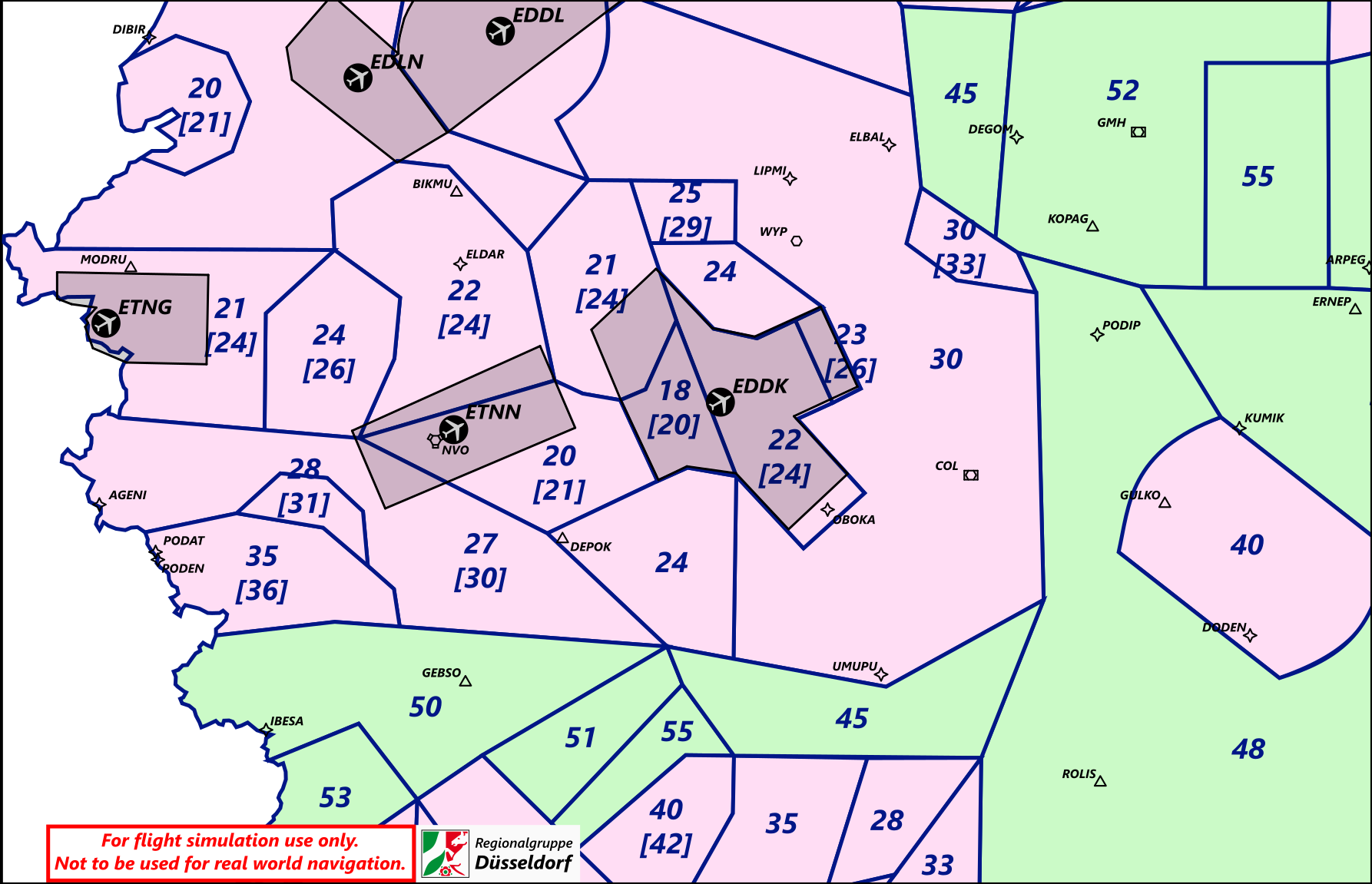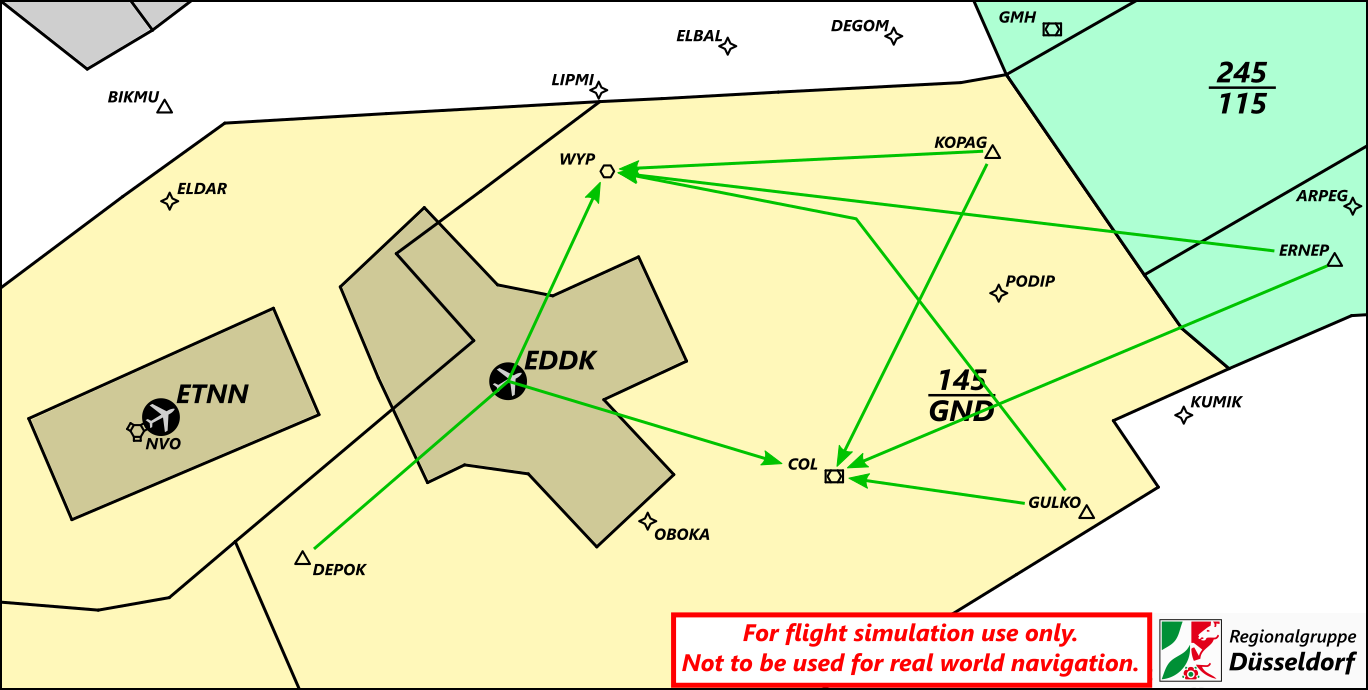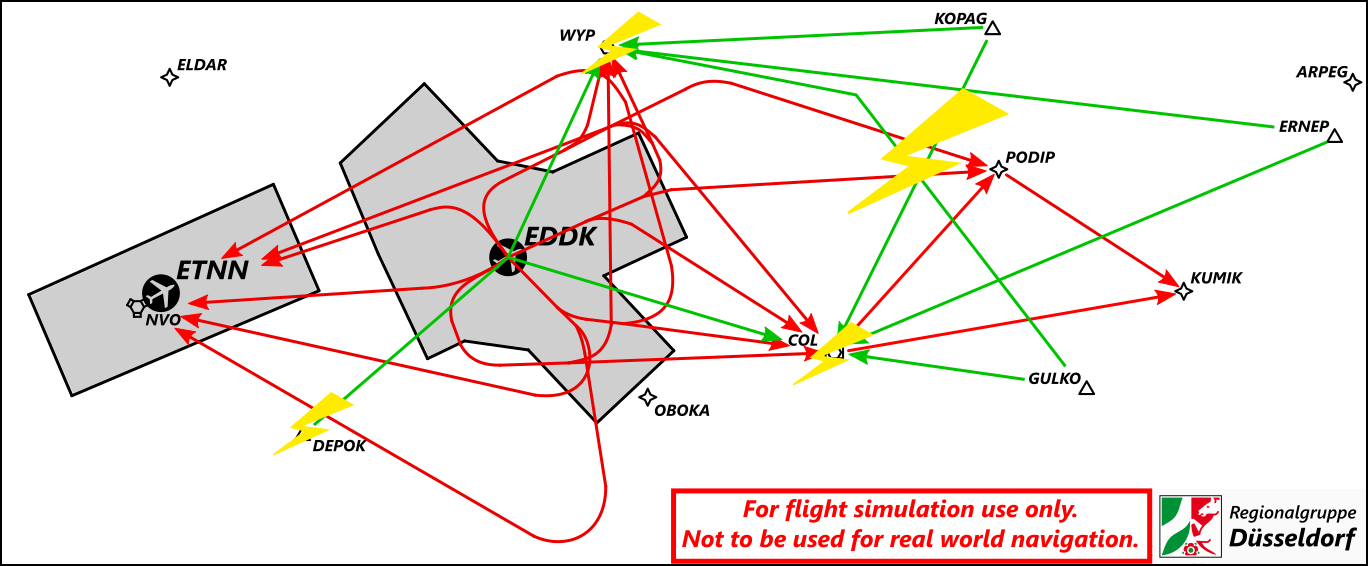Arrival
The area around Cologne is divided into several sectors and areas, which can be staffed by four ATC stations. All radar stations, with the exception of Nörvenich Radar, take over the tasks of the other stations if they are not online.
With AIRAC 2403 DKA will not cover NOR anymore!
Arrival: Cologne Arrival DKA is responsible for the area around Cologne/Bonn Airport up to the Belgian border. The sector handles all departures from Cologne and presequence the inbound flights for the feeder. If arrivals or departures from Nörvenich (ETNN) take place without another station being staffed, this traffic is also handled by Arrival.
Feeder: The Feeder (Director) DKF works within the sector of Arrival. Especially during 13 operations the small area between FAF and the Düsseldorf Arrival sector border might require closer coordination between DKA and DKF.
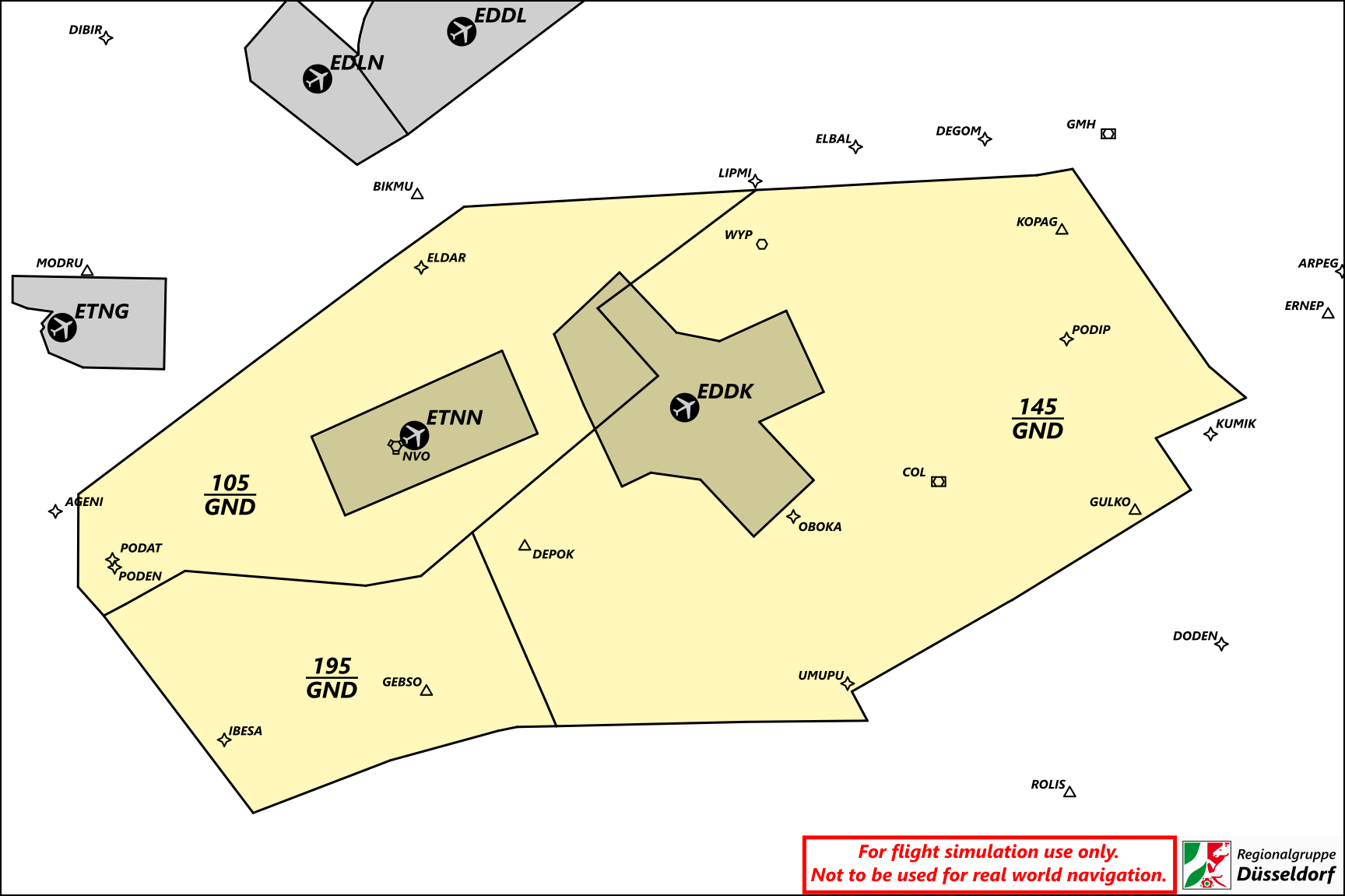 |
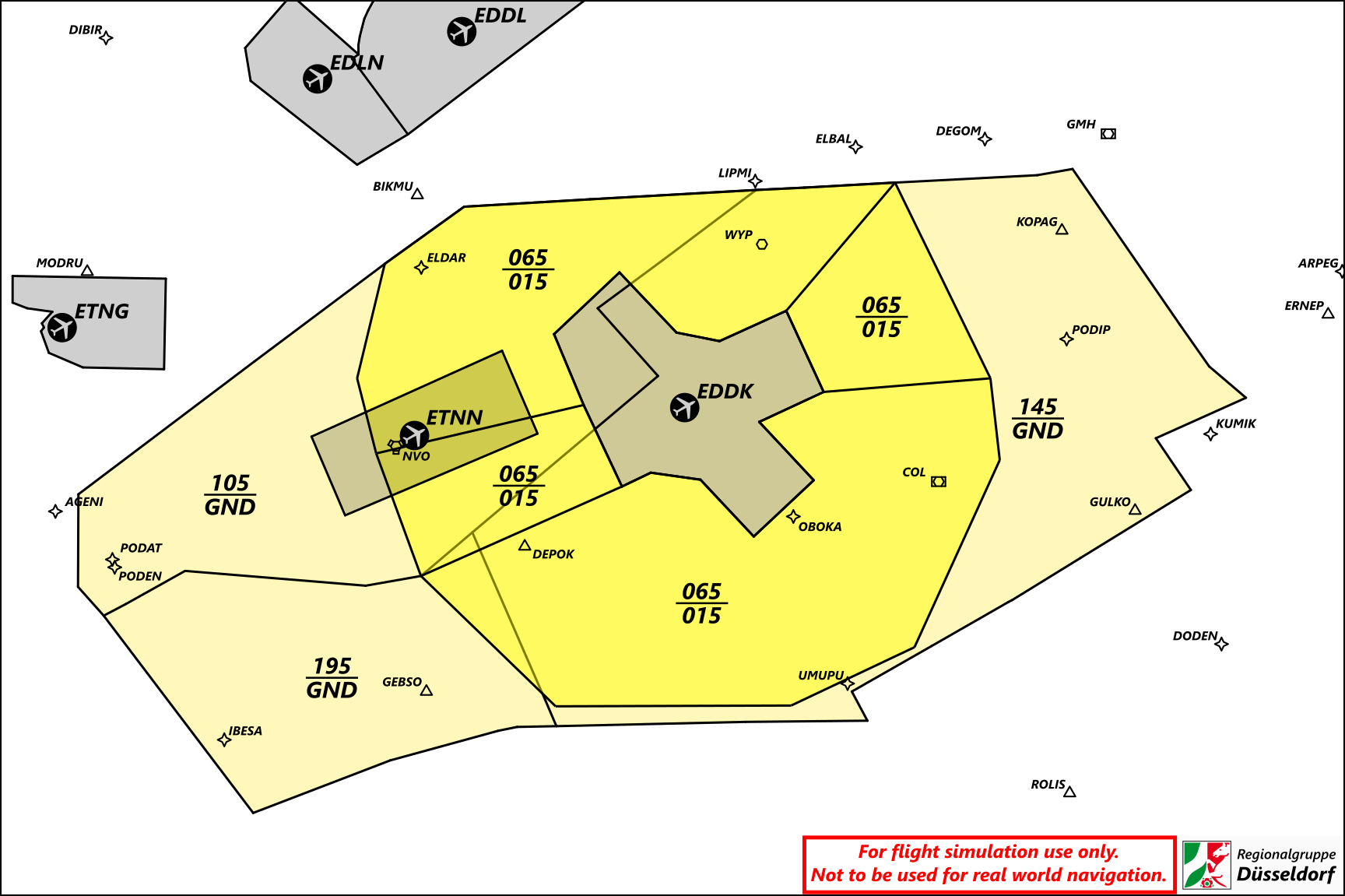 |
| Area of Responsibility Arrival |
"Area of Responsibility" Feeder (dark yellow) |
Nörvenich Radar (military position)
For arrivals to, departures from, and local traffic at the military airbase Nörvenich (ETNN), the station Nörvenich Radar (TNNA) can be staffed. This position is delegated part of the DKA airspace when it is online. Due to the close proximity to EDDK, coordination between all positions is essential.
The Easternmost part of the Nörvenich approach sector, sector A, is generally not delegated to TNNA and can be used by DKA. However, while there is inbound traffic for ETNN's runway 24, TNNA will activate this part of the sector to be able to guide the traffic onto the final approach course.
While sector A is active, approaches to EDDK's runways 06 and 24 are no longer possible. Additionally, as NVO departures out of runways 24 and 31 are also suspended, DKA shall immediately inform Tower when sector A is activated and deactivated.
TNNA: DKA, Nörvenich Radar.
DKA: Go ahead.
TNNA: Sector A now active.
DKA: Roger.DKA: Tower, DKA.
DKT: Go ahead.
DKA: Nörvenich sector A active, hold all 24 and 31 NVO departures.
DKT: Roger, holding 24 and 31 NVO departures.
Controllers shall also be aware of the increased separation they need to provide to the border of the Nörvenich AoR, as per the LoA.
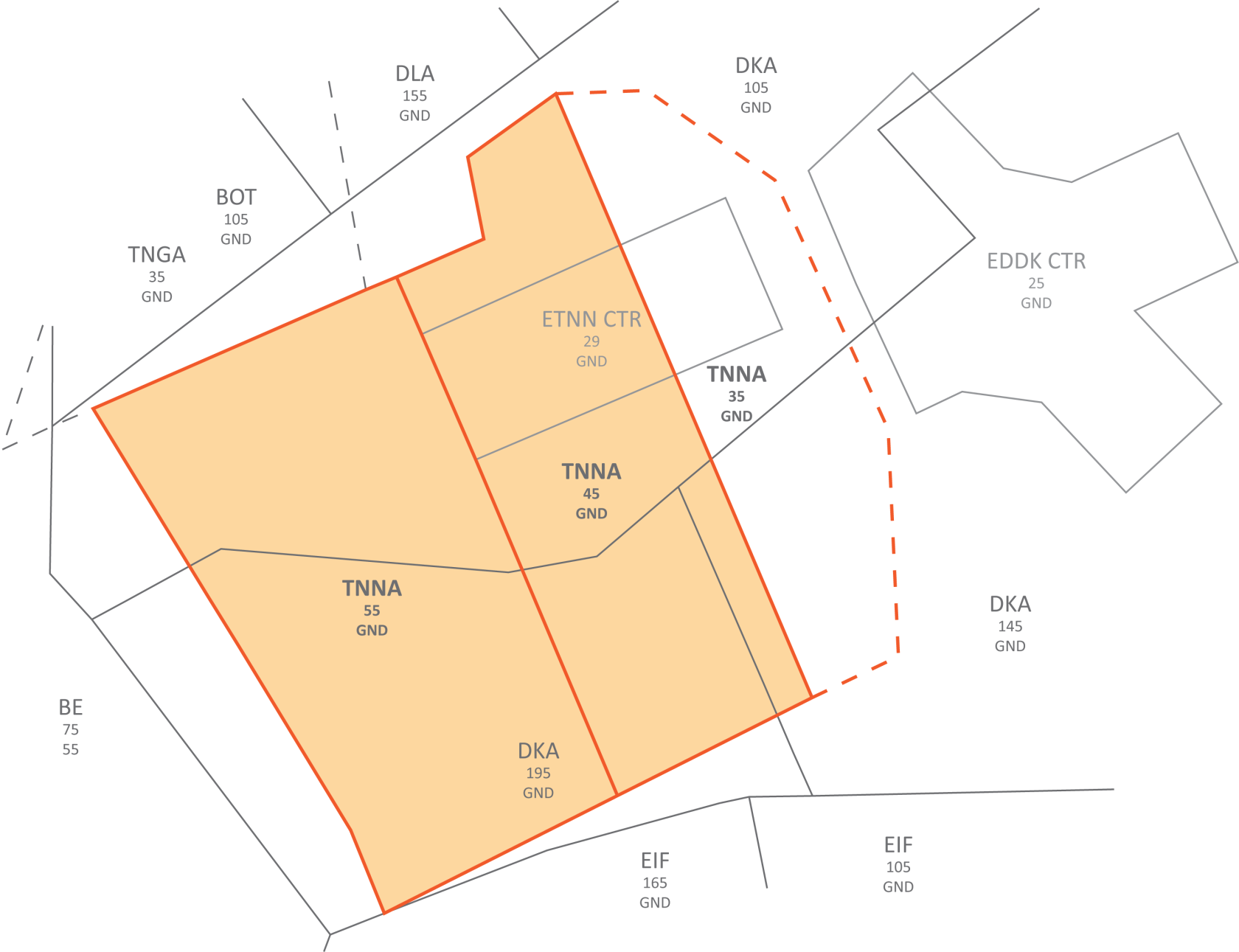 delegated sector to Nörvenich Radar
delegated sector to Nörvenich Radar
Additionally, a small section of the military position Frisbee Radar (TNGA) protrudes into DKA airspace in the Northwest if it is active.
Langen Radar Sector Nörvenich: Langen Sector Nörvenich NOR is located west of the airport above the arrival area and is primarily responsible for the pre-sequencing of inbound flights to Düsseldorf from IBESA via ELDAR and BIKMU. In addition, the sector is responsible for all departures from Cologne to Belgium via NVO.
Frankfurt Outbounds via DITAM - OBOKA also pass through the sector, as do inbound flights to Brussels via UMUPU - GEBSO and NEREL - AGENI.
NOR will cover DKA if not staffed.
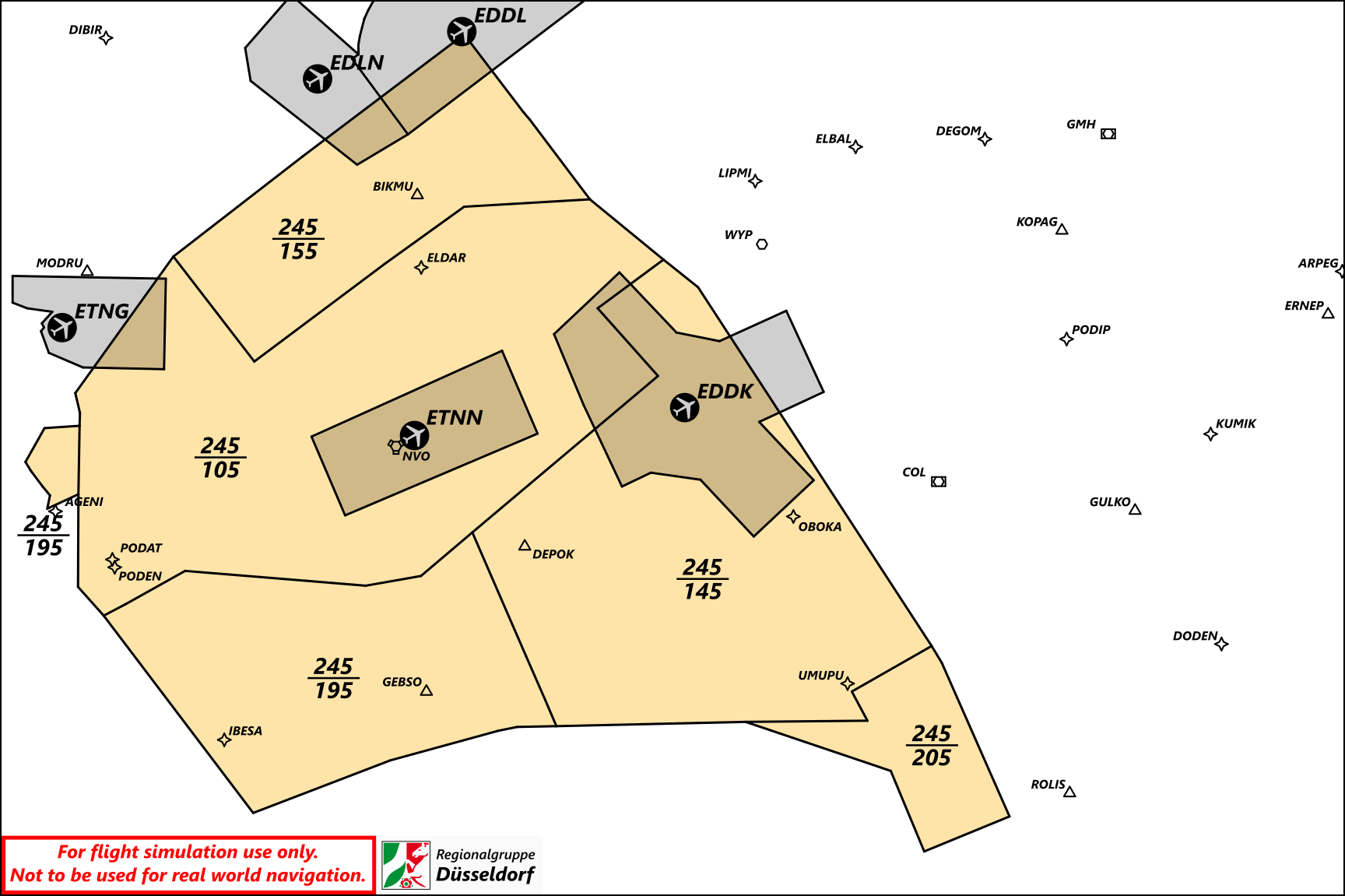 |
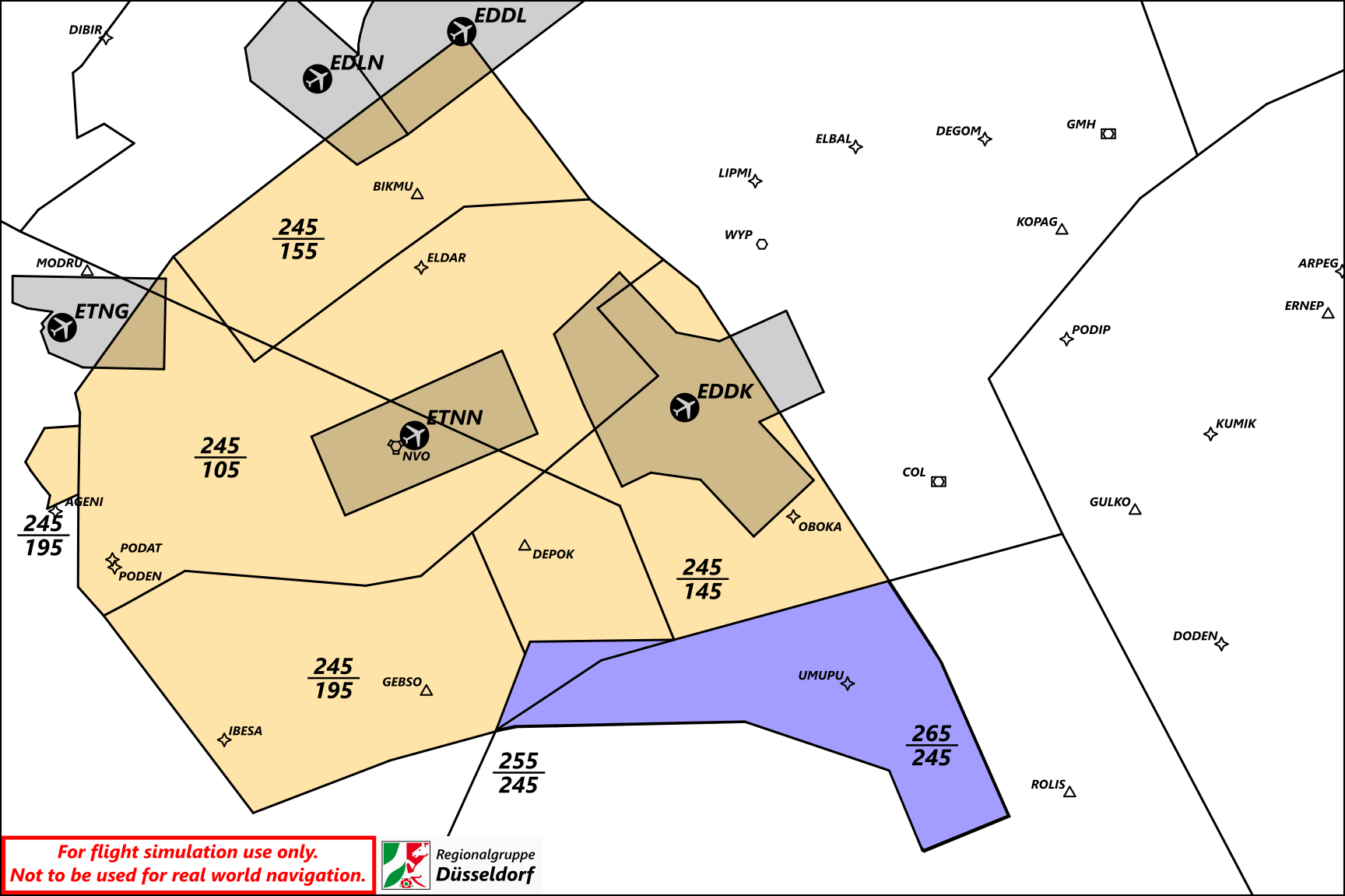 |
| Area of Responsibility Sector Nörvenich |
Area of Responsibility Sector Nörvenich |
Airspace Structure
One of the most complex airspace structures in Germany is located around Cologne and Düsseldorf airports, because several airports are located next to each other in a very small area.
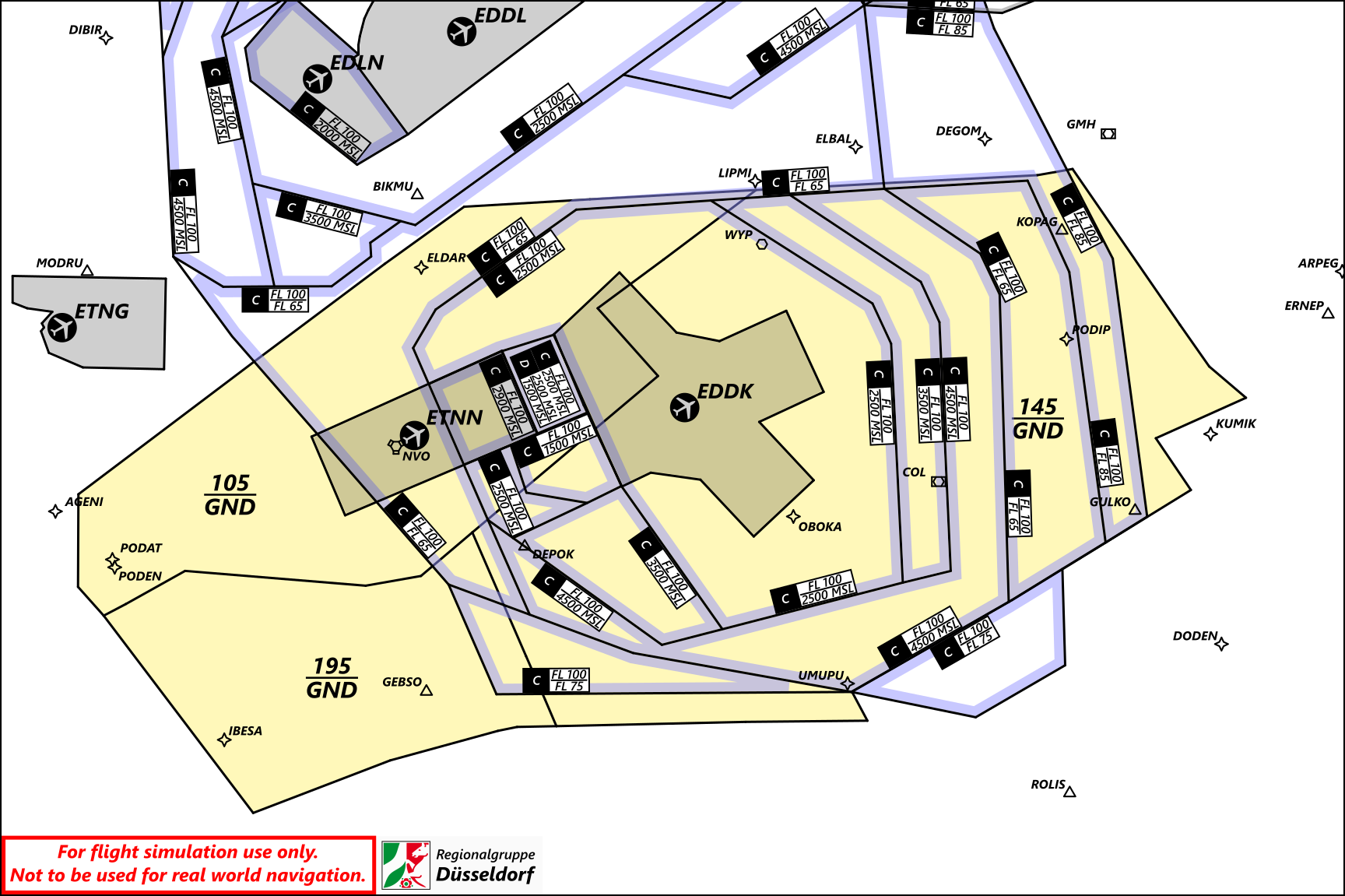 Airspace structure Cologne-Bonn
Airspace structure Cologne-Bonn
Aircraft in C/D airspace around Cologne are the responsibility of Cologne Arrival. Airspace crossings through the active approach sector are to be coordinated with the Feeder depending on the situation.
Minimum Vectoring Altitude (MVA)
The MVA around Cologne-Bonn Airport is shown in the following map:
Altitudes are in 100ft (20 = 2000ft). Figures in brackets are corrected for winter (NOV-MAR) for cold temperatures.
Standard Arrivals
The standard arrival routes for Cologne-Bonn start at five waypoints: KOPAG, ERNEP, GULKO in the east and DEPOK and NVO in the west.
For approaches via NVO (Nörvenich), this VOR is also the IAF from which various final approaches lead to the runways.
STARs for Runways 06 and 31L/R are routed from KOPAG, ERNEP and GULKO to COL (Cola). When operating Runways 13L/R and 24, the routes lead to WYP (Wyper).
Transitions: RNAV transitions to the final approach are published for all runways. Their use depends on the current traffic situation and should be flexible accordingly.
S-Transitions: An exception are the transitions with Designator S to Runway 13L. These extend deep into the approach airspace of Dusseldorf and are only used in real terms at night on the instruction of the controller. On VATSIM, these transitions should only be used in close coordination with the controller responsible for Düsseldorf in order to avoid conflicts with approaches and departures from Düsseldorf.
N-Transitions: The transitions with Designator N to runway 31R reaches with the base part into the sector Taunus TAU, which is usually served by Kitzingen KTG or Gießen GIN. The transition is also only used at night in real terms and its use on VATSIM should be coordinated with the controller responsible for TAU.
Potential Conflicts
Due to its size and the close proximity of approach and departure routes, the Cologne Arrival sector in the east of Cologne/Bonn has the greatest potential for conflict. Especially between the points KOPAG and COL near PODIP, several routes cross, so that special attention must be paid to the altitude separation there.
In the west, when using the STARs from DEPOK, care must be taken that they intersect with the departure routes to NVO between DEPOK and the airport. However, this point of conflict can be easily avoided by guiding approaching traffic early with vectors in the direction of the active runway and allowing departing traffic to fly out the SIDs.
Crossing Runway Operations
It is important during crossing runway operations that the preceeding traffic (landing or departing) has crossed the runway cross before the succeeding traffic (landing) for the other runway has reached the 1 NM final. Otherwise the succeeding traffic has to go around.
Director has to ensure, that traffic cleared on the approach of crossing runways is separated in a way, that the preceeding traffic has passed the runway crossing point, before the succeeding traffic reached it's 1 NM final. Therefore it is necessary, that both aircraft are cleared on the approach, with at least 1 NM separation between each other, on the way to the runway crossing point.
Runway 13L/31R + Runway 24 Operations: Due to the shorter distance from the FAF (Final Approach Fix) to the crossing point between RWY13L/31R and RWY 06/24, arrivals on RWY 24 shall be declared as the preceeding aircraft whenever possible.

